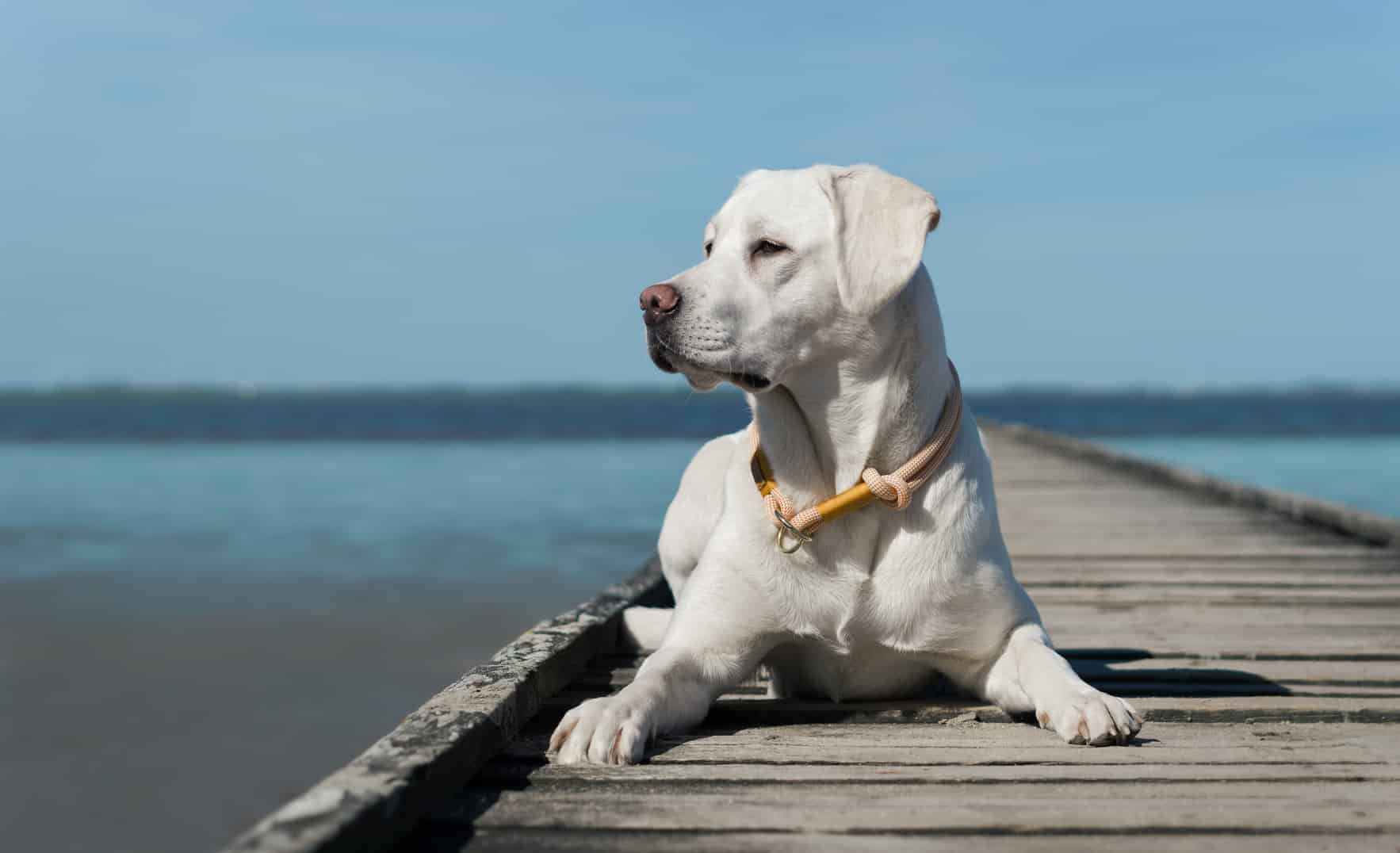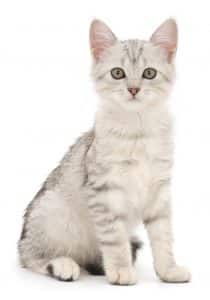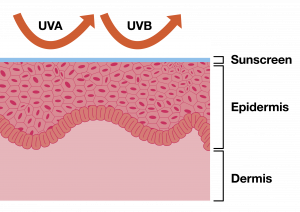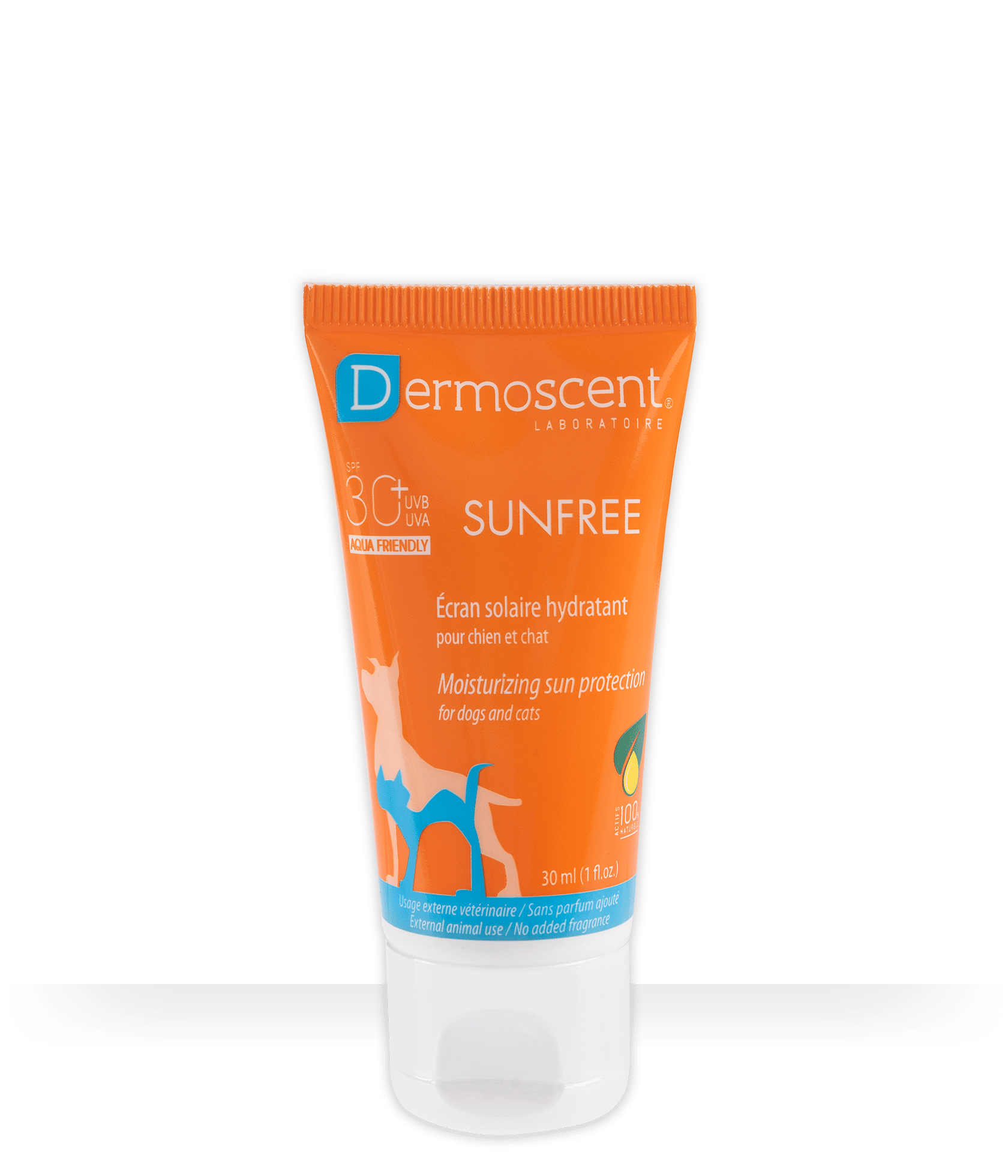Summer: the hazards of the sun for your pets’ skin

UV-sensitive animals
 Despite the protection provided by their coat, dogs and cats are sensitive to the action of ultraviolet (UV) rays, especially in areas where there is little or no hair (nose, outer ears, belly, flanks), where the skin is finer or unpigmented. A recent clipping or the presence of scarred areas devoid of hair can also increase the sensitivity of animals to UV. Some skin conditions are also aggravated by exposure to the sun (pemphigus, lupus, etc.).
Despite the protection provided by their coat, dogs and cats are sensitive to the action of ultraviolet (UV) rays, especially in areas where there is little or no hair (nose, outer ears, belly, flanks), where the skin is finer or unpigmented. A recent clipping or the presence of scarred areas devoid of hair can also increase the sensitivity of animals to UV. Some skin conditions are also aggravated by exposure to the sun (pemphigus, lupus, etc.).
Effects of the sun
Prolonged exposure to the sun leads to visible skin damage more commonly known as “sunburn”. Burning caused by UVA and UVB leads to redness, dryness and flaking, and sometimes blisters that develop into crusty lesions, accompanied by itching.
Furthermore, UVB and particularly UVA can cause skin cancers in the long term.
If your pet gets sunburned, your vet will prescribe a soothing treatment based on an emollient hydrating cream.
But nothing can beat prevention: in all cases, exposure to the sun should be avoided at the times of day when the rays are most dangerous (between 12 and 4 pm).
A sun cream specifically designed for animals should be applied to sensitive, hairless areas. The application should be repeated every 2 hours, and for dogs, after every swim. For at-risk animals, T-shirts are available.
How does sun cream work?

Sun products contain two types of filters: chemical filters, based on compounds that absorb UV rays, and mineral screens, which diffract light and reflect UV rays like a mirror. These two types of filters are similarly efficient and long-lasting; however, chemical filters may cause intolerance or allergy, and are non-biodegradable..
The sun protection factor (SPF) indicates the effectiveness of the sun protection. It is expressed as IP, FPS (French) or SPF. It has the same meaning in all countries (standardised tests). The higher the factor, the higher the percentage of UV rays blocked by the product.
Conclusion
For both humans and animals, prevention is the key factor in limiting the harmful effects of the sun’s rays. Common sense advice, coupled with the use of effective and appropriate UV protection, will best prevent sunburn and skin cancers caused by the sun.
Dr. Isabelle Mennecier, veterinarian

